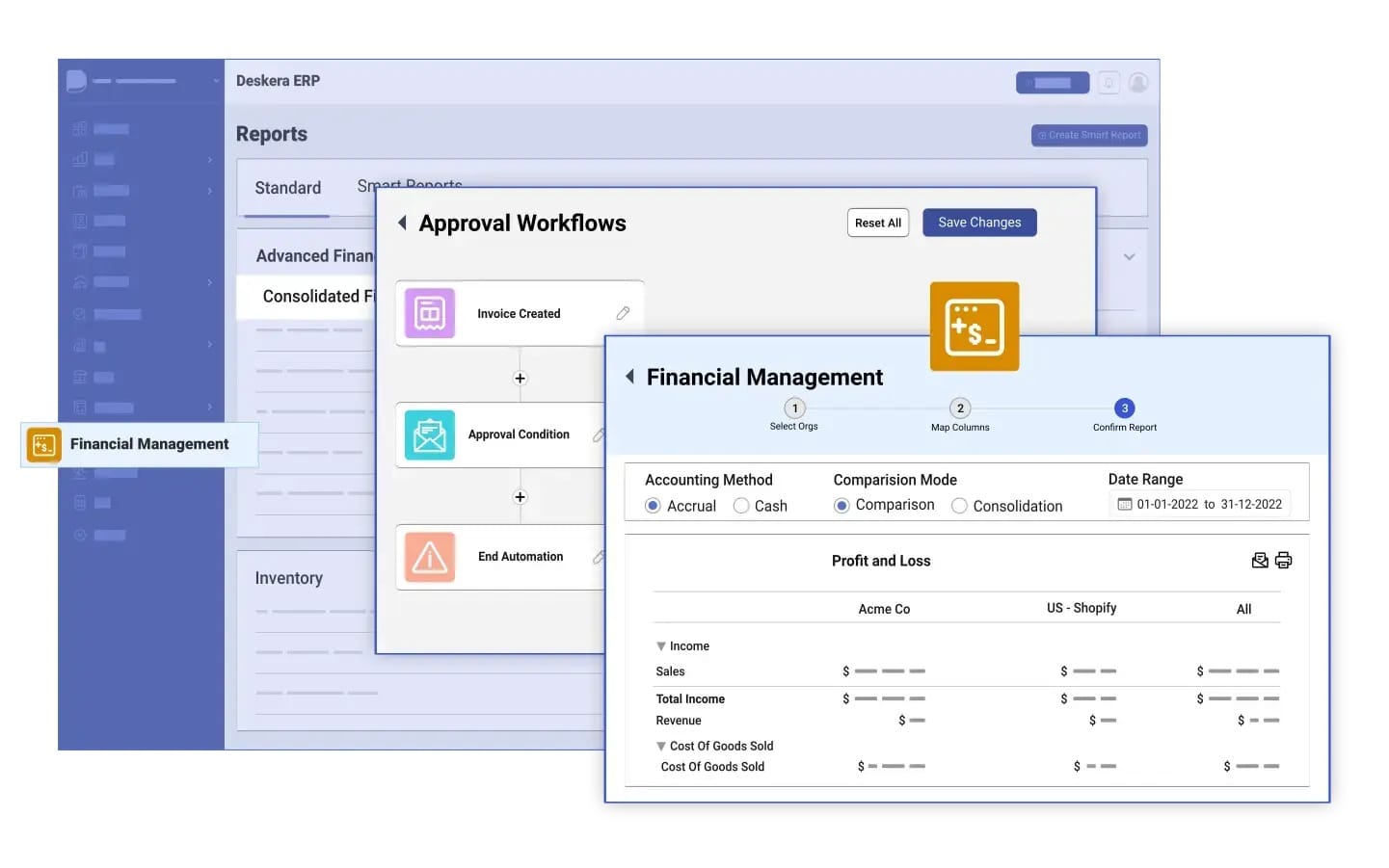Have you ever wondered how businesses track the money invested by their owners and partners — and how those investments grow or change over time? The answer lies in a key financial component known as the capital account. It’s not just an accounting term but a vital indicator of a company’s financial strength, ownership structure, and long-term growth potential.
In simple terms, a capital account records the owners’ equity — the total value that business owners or shareholders hold in the company. Whether it’s an initial investment, retained earnings, or additional funds contributed later, every financial movement that affects ownership is reflected here. For business owners, understanding how the capital account works is essential to make informed financial and strategic decisions.
From a broader perspective, the capital account serves as a financial mirror of the business. It reveals how much of the enterprise truly belongs to its owners after accounting for all liabilities. This makes it indispensable during financial reporting, partnership settlements, or when evaluating business performance and investor returns. In short, it bridges the gap between what the business owns and what the owners rightfully hold.
To manage such vital financial information efficiently, businesses today rely on modern tools like Deskera ERP. This all-in-one platform simplifies capital and equity tracking through automated journal entries, real-time reporting, and integrated accounting modules. With Deskera ERP, businesses can maintain accurate balance sheets, monitor ownership changes effortlessly, and make data-driven financial decisions — all while saving valuable time and ensuring compliance.
What is a Capital Account?
When you hear the term “capital account,” you might think it’s a bank account where a business deposits money—but in reality, it’s quite different. A capital account is a ledger that records each owner or shareholder’s financial stake in a business. It tracks contributions, profits, losses, and withdrawals, providing a clear picture of how much equity each owner holds in the company.
The capital account is essential for business bookkeeping and can also influence financial decisions, such as securing loans. Banks often review capital accounts to determine the stability and commitment of business owners. If the owners have invested a significant amount in the business, lenders may view it as less risky and even offer better loan terms or lower interest rates.
Capital accounts are dynamic, meaning their balances change over time. As the business earns profits, the account grows proportionally to each owner’s investment. Conversely, distributions, withdrawals, or losses reduce the balance. When a business dissolves, capital accounts help determine how much each partner or shareholder is entitled to receive.
The structure of a capital account varies depending on the business type:
- Sole Proprietorships: One owner holds 100% of the capital account, which reflects their contributions, profits, and withdrawals.
- Partnerships (LLCs, LPs, GPs): Each partner has a separate capital account tracking their contributions, distributions, and share of profits or losses, as defined in the partnership agreement.
- S Corporations: Shareholders’ capital accounts record their proportionate contributions, distributions, and profits, similar to partnerships, reflecting their current ownership basis in the company.
In essence, a capital account is a measure of ownership equity in a business, often listed on the balance sheet under owner’s or shareholder’s equity. It may include cash, machinery, property, receivables, or other assets contributed by owners. Maintaining an accurate capital account ensures transparency, supports financial decision-making, and reflects the true value of each owner’s stake in the company.
Capital Account vs Current Account
While both capital accounts and current accounts track financial transactions, they serve very different purposes in business and finance. Understanding the distinction is important for accurate bookkeeping and informed financial decision-making.
Current Account
In a business context, a current account tracks short-term transactions that occur regularly between the business and external entities. This can include daily operational inflows and outflows, such as payments for goods and services, income earned, or short-term liabilities. In a national or macroeconomic sense, the current account measures the trade balance, net income, and transfers of a country. Key points include:
- Focuses on regular transactions such as sales revenue, expenses, and payments.
- Measures short-term cash flows affecting business liquidity.
- In macroeconomics, includes exports/imports, investment income, and transfers.
- Deficit or negative balance indicates more outflows than inflows, while a surplus indicates the opposite.
Capital Account
A capital account, on the other hand, records long-term financial investments and ownership equity. In a business, it tracks owner or shareholder contributions, retained earnings, and withdrawals, reflecting the overall stake in the company. In a broader context, the capital account can also capture foreign direct investments, portfolio investments, and loans. Key points include:
- Reflects ownership equity and long-term investments in the business.
- Tracks capital inflows and outflows that affect the company’s financial foundation.
- In macroeconomics, it measures the trading of foreign assets and liabilities.
- Surplus indicates an inflow of money (investments or contributions), while a deficit reflects an outflow.
Key Differences
In short, the current account reflects the business’s or nation’s ongoing operational transactions, while the capital account captures investments and ownership equity that build long-term financial value.
For businesses, both accounts complement each other — one monitors day-to-day liquidity, and the other ensures proper tracking of ownership and investments.
Components of a Capital Account
A capital account records an owner’s or shareholder’s equity in a business and reflects how financial contributions and profits are managed over time. Understanding its components helps businesses maintain accurate financial records and make informed decisions. Here are the key elements:
1. Owner’s or Shareholder’s Contributions
This is the initial and any subsequent capital that owners or shareholders invest in the business. Contributions can include cash, property, machinery, or other assets. These investments form the foundation of the capital account and determine each owner’s share of equity.
2. Retained Earnings
Retained earnings are profits that the business keeps rather than distributing them to owners or shareholders. These earnings increase the capital account over time and reflect the company’s ability to reinvest in growth, pay off debts, or expand operations.
3. Withdrawals or Drawings
When owners withdraw money or assets from the business for personal use, these transactions are recorded as drawings in partnerships and sole proprietorships, or as dividends in corporations. Withdrawals reduce the balance of the capital account and must be tracked carefully to maintain equity accuracy.
4. Share of Profits and Losses
In partnerships and S corporations, each owner’s share of profits or losses affects their capital account. Profits increase the account, while losses reduce it. The distribution is usually determined by the ownership percentage or as specified in the partnership or shareholder agreement.
5. Revaluation of Assets
If the business revalues its assets — for example, through appreciation of property or equipment — adjustments may be made in the capital account. This ensures the account accurately reflects the current market value of each owner’s equity.
4. Common Stock
For corporations, a common stock account records the equity invested by shareholders in exchange for ownership shares. It forms a foundational part of the company’s shareholder equity and typically carries voting rights.
5. Preferred Stock
Preferred stock represents ownership that has priority over common stock for dividends and liquidation proceeds. This type of capital account reflects the investment made by preferred shareholders, often with fixed dividend rights.
6. Additional Paid-In Capital
Additional paid-in capital (APIC) accounts record funds contributed by shareholders over and above the nominal value of stock. This account is common in corporations and reflects extra capital injected into the business beyond the basic stock issuance.
7. Capital Reserves
Capital reserves are created from retained profits or special contributions and are often earmarked for specific purposes, such as asset replacement, expansion, or legal contingencies. These reserves strengthen the financial stability of the business without affecting day-to-day operational equity.
8. Foreign Direct Investment (FDI)
For multinational businesses or cross-border operations, a capital account may track investments made by foreign entities. This includes assets, cash, or equity stakes contributed by foreign investors, reflecting their ownership interest in the company.
9. Portfolio Investments
Portfolio investment accounts record financial investments in stocks, bonds, or other securities made by owners or investors. These accounts reflect the broader scope of capital committed to the business or associated entities.
6. Other Capital Adjustments
Other adjustments may include capital contributions from new partners, interest on partner capital, or corrections from accounting errors. Proper recording ensures transparency and prevents disputes among owners.
In summary, the capital account is a comprehensive record that combines owner investments, accumulated profits, withdrawals, and adjustments. Monitoring these components allows businesses to maintain a clear picture of ownership equity, support financial planning, and build trust with investors or lenders.
How a Capital Account Works in Business
A capital account is essentially a financial record that tracks the ownership equity of a business. It shows how much the owners or shareholders have invested, how profits and losses are allocated, and how withdrawals affect overall equity. Here’s how a capital account functions in practice:
1. Initial Capital Contribution
When a business is established, owners or shareholders contribute an initial investment in the form of cash, property, equipment, or other assets. This contribution is recorded in the capital account and forms the starting point of ownership equity. It represents the foundation for funding operations, purchasing assets, and supporting growth.
2. Additional Contributions
As the business grows or requires more funding, owners may make additional capital contributions. These could be in response to expansion, covering operating expenses, or investing in new projects. Each contribution increases the capital account balance and the corresponding ownership stake of the contributing partner or shareholder.
3. Earnings and Retained Profits
Profits generated by the business are added to the capital account. In the case of retained earnings, the company reinvests profits rather than distributing them, which helps increase the overall equity. This ensures the capital account reflects both the initial investments and the company’s accumulated growth.
4. Losses and Withdrawals
Losses reduce the balance of the capital account, reflecting a decrease in ownership equity. Similarly, withdrawals or drawings by owners decrease the account balance. In partnerships and sole proprietorships, withdrawals are carefully tracked to ensure the equity distribution remains accurate. For corporations, dividends reduce shareholder equity in the capital account.
5. Adjustments and Revaluations
Businesses may occasionally revalue assets, correct accounting errors, or adjust for changes in ownership agreements. These adjustments and revaluations ensure the capital account accurately represents the current market value of each owner’s stake and maintains transparency in financial reporting.
6. Reporting and Transparency
The capital account is usually presented on the balance sheet under owner’s equity for sole proprietorships or shareholder equity for corporations. Accurate reporting is crucial for financial planning, taxation, securing loans, and investor confidence. Lenders and investors often examine capital accounts to assess the financial health and stability of a business.
7. Partnerships and Corporations
- In partnerships, each partner has a separate capital account reflecting their contributions, share of profits and losses, and withdrawals. The partnership agreement usually specifies how profits and losses are allocated among partners.
- In corporations, the capital account is often part of shareholder equity, including common stock, preferred stock, additional paid-in capital, and retained earnings. Shareholders’ capital accounts reflect their proportionate ownership and entitlements to dividends.
8. Other Considerations
Modern businesses may integrate capital account management with accounting software, like Deskera ERP, to automate updates, generate real-time reports, and track ownership changes accurately. This reduces errors, improves compliance, and allows management to make data-driven financial decisions.
In essence, a capital account records every financial activity that affects ownership equity, ensuring transparency and accuracy for business operations, investor relations, and long-term planning.
Importance of a Capital Account for Businesses
A capital account is more than just an accounting record—it is a vital tool that helps businesses maintain financial clarity, support strategic decisions, and manage ownership effectively. Here’s why it’s crucial for any business:
1. Tracks Ownership Equity
The capital account provides a clear picture of each owner’s or shareholder’s stake in the business. By recording contributions, profits, losses, and withdrawals, it ensures that ownership is accurately tracked and disputes among partners or shareholders are minimized.
2. Supports Financial Decision-Making
Businesses rely on accurate capital accounts to make informed decisions about investments, expansions, or distributions. Understanding how much capital is available and how it has changed over time helps management plan budgets, allocate resources, and evaluate growth opportunities.
3. Enhances Transparency and Accountability
Maintaining a well-documented capital account increases financial transparency. Investors, partners, and lenders can easily see the level of owner commitment and the business’s equity position, which builds trust and credibility.
4. Facilitates Access to Financing
Banks and other lenders often review capital accounts before approving loans. A healthy capital account demonstrates that the business owners are invested in the company, reducing perceived risk and sometimes qualifying the business for better loan terms or lower interest rates.
5. Monitors Business Performance
The capital account reflects accumulated profits, retained earnings, and losses over time. Tracking these changes allows businesses to assess long-term performance, identify trends, and adjust strategies to maximize profitability and sustainability.
6. Assists in Compliance and Reporting
For tax purposes and regulatory compliance, accurate capital account records are essential. They ensure that financial statements, shareholder reports, and tax filings correctly reflect ownership equity and business performance.
7. Supports Partnerships and Corporate Governance
In partnerships and corporations, capital accounts define the distribution of profits and losses and the allocation of equity among stakeholders. Proper management prevents conflicts and ensures that agreements are honored accurately.
8. Integration with Accounting Tools
Modern ERP systems like Deskera ERP make capital account management easier by automating entries, tracking changes in real-time, and generating detailed reports. This reduces manual errors and gives business owners a clear, up-to-date view of ownership and equity at any point.
In short, a capital account is essential for financial clarity, strategic planning, compliance, and investor confidence. For businesses of all sizes, properly managing this account is a key step in building a transparent, stable, and growth-oriented financial foundation.
Common Mistakes to Avoid in Managing Capital Accounts
Managing a capital account accurately is essential for tracking ownership equity, maintaining financial transparency, and supporting strategic decisions. However, businesses often make mistakes that can lead to errors, disputes, or compliance issues. Here are the most common pitfalls to avoid:
1. Failing to Record Contributions and Withdrawals Properly
One of the most frequent mistakes is not documenting owner contributions or withdrawals accurately. Missing or mis-recorded transactions can distort ownership equity and make it difficult to reconcile accounts at the end of the fiscal year.
2. Ignoring Profit and Loss Allocation
In partnerships and corporations, failing to allocate profits and losses according to the agreed-upon percentages can create disputes among partners or shareholders. Every change in profit or loss should be reflected promptly in each owner’s capital account.
3. Mixing Personal and Business Finances
Owners sometimes use business funds for personal expenses without proper documentation, leading to inaccurate capital account balances. Maintaining clear separation between personal and business transactions is crucial for transparency and tax compliance.
4. Neglecting Reconciliation and Reviews
Skipping regular reconciliation of capital accounts can allow errors to accumulate over time, making it difficult to track changes accurately. Capital accounts should be reviewed quarterly or annually to ensure accuracy and compliance with accounting standards.
5. Overlooking Adjustments and Revaluations
Businesses often fail to account for asset revaluations, corrections, or special adjustments, which can misrepresent owner equity. For example, appreciated property or machinery should be reflected in the capital account to show true ownership value.
6. Incorrect Tax Reporting
Improper reporting of capital accounts on tax forms, such as Schedule K-1 for partnerships and S corporations, can lead to compliance issues with the IRS. Businesses must ensure that all contributions, withdrawals, and profit allocations match reported income.
7. Not Using Accounting Tools
Relying solely on manual spreadsheets increases the risk of errors. Not leveraging accounting software or ERP systems like Deskera ERP can make capital account management time-consuming, error-prone, and less transparent.
8. Failing to Establish Clear Policies
Without clear rules for contributions, withdrawals, and profit sharing, misunderstandings can arise between owners or shareholders. Documented policies ensure consistency and help prevent disputes over equity changes.
By avoiding these common mistakes, businesses can maintain accurate capital accounts, support transparent financial reporting, and strengthen relationships with investors, partners, and lenders. Proper management not only ensures compliance but also enhances the company’s ability to make informed strategic decisions.
Tips for Managing Capital Accounts
Proper management of capital accounts is essential for maintaining financial clarity, ensuring accurate ownership records, and supporting strategic business decisions. Here are some practical tips for effectively managing capital accounts:
1. Maintain Accurate Records
Keep detailed records of all owner contributions, profits, losses, withdrawals, and adjustments. Accurate bookkeeping ensures that the capital account reflects the true financial position of the business. These records are also crucial when preparing balance sheets, calculating retained earnings, or reconciling accounts at the end of the fiscal year.
2. Monitor Receivables and Payables
Track receivables closely to ensure timely collection of payments from clients or other businesses. Similarly, pay vendors on time to avoid inflating retained earnings with money that is actually owed. Proper monitoring of payables and receivables keeps your capital account accurate and provides a clear picture of available equity.
3. Regular Reconciliation
Reconcile capital accounts at least quarterly or annually to account for profits, losses, withdrawals, and additional contributions. Reconciliation helps identify discrepancies, prevents errors, and ensures that each owner’s or shareholder’s equity is properly recorded.
4. Use Accounting Software
Leverage modern accounting or ERP software to automate calculations, record transactions, and generate reports. Tools like Deskera ERP can track contributions, profits, and withdrawals in real-time, reducing errors and saving time. Automation also makes it easier to comply with tax regulations and produce accurate financial statements.
5. Establish Clear Policies for Contributions and Withdrawals
Define rules for how and when owners can contribute or withdraw funds from the business. Clear policies prevent misunderstandings and maintain the stability of capital accounts, especially in partnerships or multi-owner businesses.
6. Regularly Review Profit Allocation
If your business distributes profits among multiple partners or shareholders, periodically review the allocation percentages to ensure they reflect ownership agreements. Adjustments may be necessary if ownership stakes change or if reinvestment strategies are implemented.
7. Plan for Growth and Investment
Use capital accounts to plan reinvestment strategies or future expansions. By understanding the available equity and tracking historical trends, businesses can make informed decisions about funding growth, purchasing assets, or taking on loans.
8. Maintain Transparency and Communication
For partnerships and corporations, maintain open communication with owners or shareholders about changes in the capital account. Transparency builds trust and ensures all stakeholders understand their equity, distributions, and responsibilities.
Reporting Capital Accounts on Tax Forms
Capital accounts not only track ownership equity within a business but also play a critical role in tax reporting. Properly reporting capital account changes ensures compliance with IRS regulations and accurately reflects each owner’s or shareholder’s tax obligations.
1. Tracking Capital Accounts Throughout the Year
Business owners often track each member’s capital account and basis using spreadsheets or accounting software. These records include all contributions, distributions, profits, losses, and adjustments. By maintaining accurate records throughout the year, businesses ensure that the ending balance in the capital account correctly represents funds or assets that have not yet been distributed.
2. Pass-Through Entities
For sole proprietorships and single-member LLCs, the business income or loss is reported on the owner’s personal tax return. Profits and losses pass through to the owner, typically reported via Schedule C of Form 1040. In these structures, distributions are not taxed separately, but the capital account still helps track owner equity and contributions for accurate reporting.
3. Partnerships
Partnerships prepare Schedule K-1 as part of Form 1065, which details each partner’s share of income, deductions, and changes in the capital account. This form informs the IRS about how profits, losses, and distributions are allocated among partners. Correctly reporting these changes ensures that each partner’s tax liability aligns with the actual equity reflected in the capital account.
4. S Corporations
S corporations also use Schedule K-1, filed as part of Form 1120S, to report shareholder income, losses, and changes in the capital account. Accurate reporting is essential for compliance, as the IRS uses this information to verify that capital account changes match income and balance sheet reporting.
5. State-Specific Reporting
Some states may require additional or state-specific Schedule K-1 forms. Businesses should consult with a tax professional to ensure they meet all federal and state reporting obligations.
6. Key Considerations for Accuracy
- Ensure all contributions, distributions, and retained earnings are accurately reflected in the capital account.
- Reconcile the capital account with the balance sheet and income statements before filing.
- Consult an accountant or tax advisor if you are unsure about the correct forms or reporting methods.
Properly reporting capital accounts on tax forms is crucial for compliance, accuracy, and transparency. It ensures that owners or shareholders pay the correct amount of taxes and that the business’s financial records align with regulatory requirements.
How Deskera ERP Can Help Manage Capital Accounts

Managing capital accounts manually can be time-consuming, error-prone, and complex, especially for businesses with multiple owners, partners, or shareholders. Deskera ERP offers a comprehensive solution to simplify capital account management and ensure accurate financial reporting. Here’s how it helps:
1. Automated Recording of Contributions and Withdrawals
Deskera ERP automatically records owner contributions, additional investments, and withdrawals. This reduces manual errors and ensures that every transaction is captured in real-time, keeping the capital account up to date.
2. Profit and Loss Allocation
The system allows businesses to allocate profits and losses accurately according to ownership percentages or partnership agreements. Deskera ERP can automatically update each owner’s capital account based on net income, retained earnings, and distributions.
3. Reconciliation and Reporting
Deskera ERP simplifies capital account reconciliation at the end of each fiscal period. It generates real-time reports that reconcile contributions, withdrawals, profits, losses, and adjustments, providing transparency and reducing discrepancies.
4. Integration with Tax and Accounting Modules
Deskera ERP integrates capital account management with tax and accounting modules, making it easier to report changes on forms like Schedule K-1 for partnerships and S corporations. This ensures compliance with IRS regulations and state-specific reporting requirements.
5. Multi-User and Multi-Entity Support
For businesses with multiple partners, subsidiaries, or investors, Deskera ERP supports multi-user access and multi-entity management, allowing each owner or stakeholder to track their equity individually while maintaining centralized oversight for management.
6. Audit Trails and Transparency
Every transaction in Deskera ERP is logged with a detailed audit trail, helping businesses maintain accountability and transparency. This feature is especially useful during audits or financial reviews.
7. Forecasting and Financial Planning
With integrated analytics and forecasting tools, Deskera ERP helps businesses plan capital contributions, withdrawals, and reinvestments. This allows management to make informed decisions about growth, expansions, and funding strategies.
8. Ease of Use and Accessibility
Deskera ERP’s user-friendly interface and cloud accessibility ensure that capital account data can be accessed anytime, anywhere. Owners and accountants can view real-time balances, generate reports, and make updates without the hassle of manual spreadsheets.
In essence, Deskera ERP transforms capital account management from a complex, error-prone process into an automated, transparent, and efficient system. Businesses can save time, maintain accurate equity records, stay compliant with tax regulations, and make strategic financial decisions with confidence.
Key Takeaways
- A capital account represents the ownership stake of individuals or entities in a business, reflecting investments, retained earnings, and withdrawals. It is vital for understanding a company’s equity position and long-term financial health.
- A capital account is a financial record that tracks each owner’s or partner’s contributions, earnings, losses, and withdrawals. It serves as a measure of ownership equity and is essential for financial reporting and business decision-making.
- While the capital account measures long-term investments and ownership equity, the current account focuses on a nation’s trade balance, income, and direct payments. Together, they reflect different aspects of financial performance and international balance of payments.
- The main components include owner contributions, retained earnings, profits, losses, withdrawals, and adjustments. These elements together define how much value each owner holds in the business at any given time.
- Capital accounts evolve through initial investments, additional contributions, profit allocations, losses, and revaluations. They help track each owner’s changing equity position, ensuring fair distribution and accurate financial records.
- A well-maintained capital account supports financial transparency, investor confidence, and compliance. It provides a clear picture of ownership structure and helps in decision-making, loan approvals, and partnership evaluations.
- Capital accounts fluctuate due to owner contributions, profit allocations, losses, and withdrawals. Regular reconciliation ensures that the records accurately reflect each owner’s equity and maintain transparency across financial periods.
- Avoid errors like mixing personal and business funds, incorrect profit allocation, neglecting adjustments, or skipping reconciliation to maintain financial integrity and prevent compliance issues.
- Effective management requires accurate record-keeping, timely vendor payments, monitoring receivables, and leveraging accounting software to ensure up-to-date and error-free financial tracking.
- Businesses must report capital account changes accurately using forms such as Schedule K-1 for partnerships and S corporations to comply with IRS regulations and ensure tax accuracy.
- Deskera ERP automates capital account tracking, profit allocation, reconciliation, and reporting. It ensures accuracy, compliance, and transparency while saving time and improving financial decision-making.
Related Articles
















